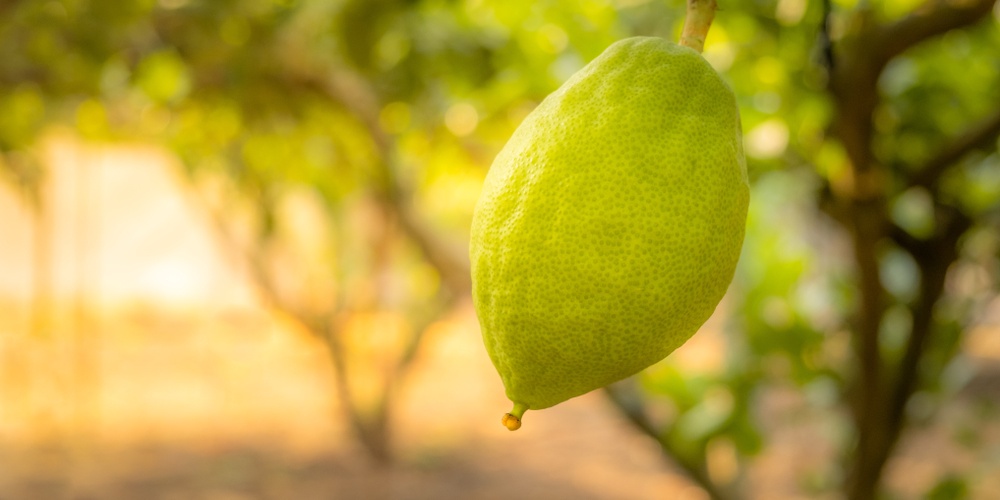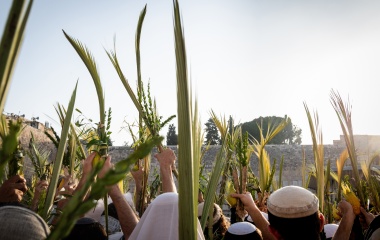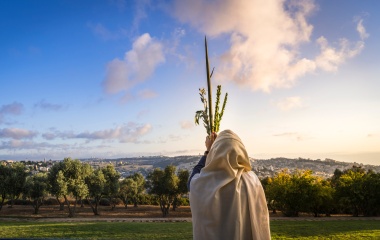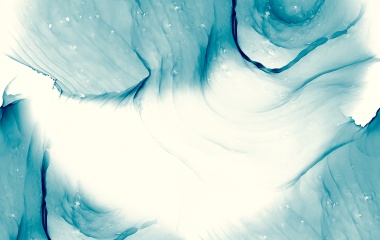
Judaism is not oblivious to the power and even importance of physical beauty. Phrases such as yefat tohar v’yefot ma’areh, loosely translated as very attractive, is one we find in the Torah to describe such heroines as Sarah, Rivka, Rachel and Esther. The Beit HaMikdash—and, by extension, our shuls—had to physically reflect the fact that it is the dwelling place of G-d. Beauty is to be obvious to all who enter.
“And you shall take for yourselves on the first day a pri etz hadar, a fruit of the beautiful tree, an unopened palm frond, myrtle branches and willows that grow near the brook and you shall rejoice before G-d for seven days” (Vayikra 23:40). Amazingly, the Torah does not identify this beautiful fruit, and it is left to the Sages of the Talmud to equate the pri etz hadar with an etrog.
In reaching this conclusion, our Sages (Sukkah 35a) used two indicators, one based on the words pri etz and one based on the word hadar. The rabbis understood the expression pri etz to refer to a fruit, the taste of which is similar to that of the tree, the etz from which it grows. The Sages further understood the word hadar as referring to a fruit that lives, from the Hebrew word dar, on the tree from year to year. Unlike other fruits, which grow during the spring and summer and are harvested in the fall, the etrog can live on the tree for many years.
It appears that there is more than just semantics involved. Our Sages are defining for us the Jewish meaning of beauty, namely, endurance and continuity. In the physical world, beauty is defined solely by appearance. In such a world, beauty is short-lived. The Jewish concept of beauty is something that has permanence, is rooted in the past, and is a constant. Thus, the Biblical command to give respect to the elderly is phrased as, “v’hadarta p’nei zaken, honouring the face of the aged” (Vayikra 19:32). In Judaism, beauty is associated with old age—quite a contrast to current societal trends.
The etrog tree is one that gives its fruit all year round. Judaism is to be lived 365 days a year. The fruit of Torah—morality, dignity, holiness, sensitivity—can be attained only if Torah is a constant in our life. If one turns to Judaism only on special occasions, it is hard to get the full benefit of the fruit. It might even leave a bitter taste, G-d forbid.
Just as the pianist who has not practiced for months may miss too many notes and thus, render the beautiful symphony unpleasant for the unlucky listeners, so too one whose Judaism is not practiced on a regular, daily basis runs the risk of having his Judaism atrophy. Thus, the view (see the Introduction to the Ein Yaakov) that the most important verse in the Torah is, “The first sheep should be offered in the morning and the second sheep in the afternoon” (Shemot 29:39). The daily routine of offerings, each and every morning and each and every evening, is the essence of a Jewish way of life.
By leading a full Jewish life on a daily basis, it becomes much easier to attain the second ingredient of Jewish beauty, continuity from one generation to the next. Just as the fruit of the etrog must taste like the tree itself, children must follow in the footsteps of their parents. What can be more beautiful than parent and child walking in unison? Thus, “the two of them went together” (Breisheet 22:8), as the Torah notes regarding Avraham and Yitzchak. While their personalities were radically different, their value system was one and the same. This is the real meaning of Jewish beauty.



